
List of Nobel laureates in Physics
Encyclopedia
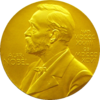
Nobel Prize in Physics
The Nobel Prize in Physics is awarded once a year by the Royal Swedish Academy of Sciences. It is one of the five Nobel Prizes established by the will of Alfred Nobel in 1895 and awarded since 1901; the others are the Nobel Prize in Chemistry, Nobel Prize in Literature, Nobel Peace Prize, and...
is awarded annually by the Royal Swedish Academy of Sciences
Royal Swedish Academy of Sciences
The Royal Swedish Academy of Sciences or Kungliga Vetenskapsakademien is one of the Royal Academies of Sweden. The Academy is an independent, non-governmental scientific organization which acts to promote the sciences, primarily the natural sciences and mathematics.The Academy was founded on 2...
to scientists in the various fields of physics
Physics
Physics is a natural science that involves the study of matter and its motion through spacetime, along with related concepts such as energy and force. More broadly, it is the general analysis of nature, conducted in order to understand how the universe behaves.Physics is one of the oldest academic...
. It is one of the five Nobel Prize
Nobel Prize
The Nobel Prizes are annual international awards bestowed by Scandinavian committees in recognition of cultural and scientific advances. The will of the Swedish chemist Alfred Nobel, the inventor of dynamite, established the prizes in 1895...
s established by the 1895 will
Will (law)
A will or testament is a legal declaration by which a person, the testator, names one or more persons to manage his/her estate and provides for the transfer of his/her property at death...
of Alfred Nobel
Alfred Nobel
Alfred Bernhard Nobel was a Swedish chemist, engineer, innovator, and armaments manufacturer. He is the inventor of dynamite. Nobel also owned Bofors, which he had redirected from its previous role as primarily an iron and steel producer to a major manufacturer of cannon and other armaments...
(who died in 1896), awarded for outstanding contributions in physics. As dictated by Nobel's will, the award is administered by the Nobel Foundation
Nobel Foundation
The Nobel Foundation is a private institution founded on 29 June 1900 to manage the finances and administration of the Nobel Prizes. The Foundation is based on the last will of Alfred Nobel, the inventor of dynamite....
and awarded by a committee that consists of five members elected by the Royal Swedish Academy of Sciences. The first Nobel Prize in Physics was awarded in 1901 to Wilhelm Conrad Röntgen
Wilhelm Conrad Röntgen
Wilhelm Conrad Röntgen was a German physicist, who, on 8 November 1895, produced and detected electromagnetic radiation in a wavelength range today known as X-rays or Röntgen rays, an achievement that earned him the first Nobel Prize in Physics in 1901....
, of Germany
Germany
Germany , officially the Federal Republic of Germany , is a federal parliamentary republic in Europe. The country consists of 16 states while the capital and largest city is Berlin. Germany covers an area of 357,021 km2 and has a largely temperate seasonal climate...
. Each recipient receives a medal, a diploma and a monetary award prize that has varied throughout the years. In 1901, Röntgen received 150,782 SEK
Swedish krona
The krona has been the currency of Sweden since 1873. Both the ISO code "SEK" and currency sign "kr" are in common use; the former precedes or follows the value, the latter usually follows it, but especially in the past, it sometimes preceded the value...
, which is equal to 7,731,004 SEK in December 2007. In 2008, the prize was awarded to Makoto Kobayashi
Makoto Kobayashi (physicist)
is a Japanese physicist known for his work on CP-violation who was awarded one quarter of the 2008 Nobel Prize in Physics "for the discovery of the origin of the broken symmetry which predicts the existence of at least three families of quarks in nature."- Biography :After completing his PhD at...
, Toshihide Maskawa
Toshihide Maskawa
is a Japanese theoretical physicist known for his work on CP-violation who was awarded one quarter of the 2008 Nobel Prize in Physics "for the discovery of the origin of the broken symmetry which predicts the existence of at least three families of quarks in nature."-Biography:A native of Aichi...
and Yoichiro Nambu
Yoichiro Nambu
is a Japanese-born American physicist, currently a professor at the University of Chicago. Known for his contributions to the field of theoretical physics, he was awarded a one-half share of the Nobel Prize in Physics in 2008 for the discovery of the mechanism of spontaneous broken symmetry in...
who shared the prize amount of 10,000,000 SEK (slightly more than €
Euro
The euro is the official currency of the eurozone: 17 of the 27 member states of the European Union. It is also the currency used by the Institutions of the European Union. The eurozone consists of Austria, Belgium, Cyprus, Estonia, Finland, France, Germany, Greece, Ireland, Italy, Luxembourg,...
1 million, or US$
United States dollar
The United States dollar , also referred to as the American dollar, is the official currency of the United States of America. It is divided into 100 smaller units called cents or pennies....
1.4 million). The award is presented in Stockholm
Stockholm
Stockholm is the capital and the largest city of Sweden and constitutes the most populated urban area in Scandinavia. Stockholm is the most populous city in Sweden, with a population of 851,155 in the municipality , 1.37 million in the urban area , and around 2.1 million in the metropolitan area...
at an annual ceremony on December 10, the anniversary of Nobel's death.
John Bardeen
John Bardeen
John Bardeen was an American physicist and electrical engineer, the only person to have won the Nobel Prize in Physics twice: first in 1956 with William Shockley and Walter Brattain for the invention of the transistor; and again in 1972 with Leon Neil Cooper and John Robert Schrieffer for a...
is the only laureate to win the prize twice—in 1956 and 1972. One other has also won Nobel Prizes in other subjects: Marie Curie
Marie Curie
Marie Skłodowska-Curie was a physicist and chemist famous for her pioneering research on radioactivity. She was the first person honored with two Nobel Prizes—in physics and chemistry...
(physics in 1903, chemistry in 1911). William Lawrence Bragg
William Lawrence Bragg
Sir William Lawrence Bragg CH OBE MC FRS was an Australian-born British physicist and X-ray crystallographer, discoverer of the Bragg law of X-ray diffraction, which is basic for the determination of crystal structure. He was joint winner of the Nobel Prize for Physics in 1915. He was knighted...
is the youngest ever Nobel Laureate; he won the prize in 1915 at the age of 25. Two women have won the prize: Marie Curie and Maria Goeppert-Mayer (1963), which is the least of any of the original five Nobel Prizes. As of 2011, the prize has been awarded to 191 individuals. There have been six years in which the Nobel Prize in Physics was not awarded (1916, 1931, 1934, 1940–1942).
Laureates
| Year | Laureate | |||
|---|---|---|---|---|
| 1901 |  |
Wilhelm Conrad Röntgen Wilhelm Conrad Röntgen Wilhelm Conrad Röntgen was a German physicist, who, on 8 November 1895, produced and detected electromagnetic radiation in a wavelength range today known as X-rays or Röntgen rays, an achievement that earned him the first Nobel Prize in Physics in 1901.... |
Germany Germany Germany , officially the Federal Republic of Germany , is a federal parliamentary republic in Europe. The country consists of 16 states while the capital and largest city is Berlin. Germany covers an area of 357,021 km2 and has a largely temperate seasonal climate... |
"in recognition of the extraordinary services he has rendered by the discovery of the remarkable rays subsequently named after him" |
| 1902 |  |
Hendrik Lorentz Hendrik Lorentz Hendrik Antoon Lorentz was a Dutch physicist who shared the 1902 Nobel Prize in Physics with Pieter Zeeman for the discovery and theoretical explanation of the Zeeman effect... |
Netherlands Netherlands The Netherlands is a constituent country of the Kingdom of the Netherlands, located mainly in North-West Europe and with several islands in the Caribbean. Mainland Netherlands borders the North Sea to the north and west, Belgium to the south, and Germany to the east, and shares maritime borders... |
"in recognition of the extraordinary service they rendered by their researches into the influence of magnetism Magnetism Magnetism is a property of materials that respond at an atomic or subatomic level to an applied magnetic field. Ferromagnetism is the strongest and most familiar type of magnetism. It is responsible for the behavior of permanent magnets, which produce their own persistent magnetic fields, as well... upon radiation phenomena" |
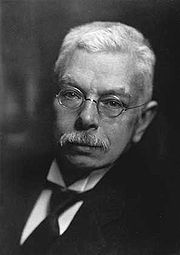 |
Pieter Zeeman Pieter Zeeman Pieter Zeeman was a Dutch physicist who shared the 1902 Nobel Prize in Physics with Hendrik Lorentz for his discovery of the Zeeman effect.-Childhood and youth:... |
Netherlands | ||
| 1903 | 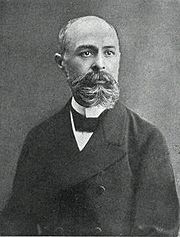 |
Antoine Henri Becquerel Henri Becquerel Antoine Henri Becquerel was a French physicist, Nobel laureate, and the discoverer of radioactivity along with Marie Curie and Pierre Curie, for which all three won the 1903 Nobel Prize in Physics.-Early life:... |
France France The French Republic , The French Republic , The French Republic , (commonly known as France , is a unitary semi-presidential republic in Western Europe with several overseas territories and islands located on other continents and in the Indian, Pacific, and Atlantic oceans. Metropolitan France... |
"[for] his discovery of spontaneous radioactivity" |
 |
Pierre Curie Pierre Curie Pierre Curie was a French physicist, a pioneer in crystallography, magnetism, piezoelectricity and radioactivity, and Nobel laureate. He was the son of Dr. Eugène Curie and Sophie-Claire Depouilly Curie ... |
France | "[for] their joint researches on the radiation phenomena discovered by Professor Henri Becquerel Henri Becquerel Antoine Henri Becquerel was a French physicist, Nobel laureate, and the discoverer of radioactivity along with Marie Curie and Pierre Curie, for which all three won the 1903 Nobel Prize in Physics.-Early life:... " |
|
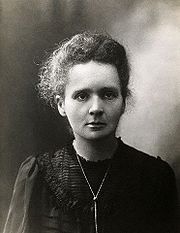 |
Marie Curie Marie Curie Marie Skłodowska-Curie was a physicist and chemist famous for her pioneering research on radioactivity. She was the first person honored with two Nobel Prizes—in physics and chemistry... |
Poland France |
||
| 1904 |  |
John William Strutt John Strutt, 3rd Baron Rayleigh John William Strutt, 3rd Baron Rayleigh, OM was an English physicist who, with William Ramsay, discovered the element argon, an achievement for which he earned the Nobel Prize for Physics in 1904... |
United Kingdom United Kingdom The United Kingdom of Great Britain and Northern IrelandIn the United Kingdom and Dependencies, other languages have been officially recognised as legitimate autochthonous languages under the European Charter for Regional or Minority Languages... |
"for his investigations of the densities of the most important gases and for his discovery of argon Argon Argon is a chemical element represented by the symbol Ar. Argon has atomic number 18 and is the third element in group 18 of the periodic table . Argon is the third most common gas in the Earth's atmosphere, at 0.93%, making it more common than carbon dioxide... in connection with these studies" |
| 1905 | 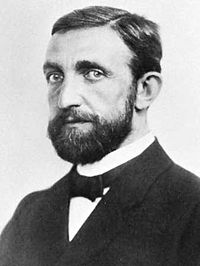 |
Philipp Eduard Anton von Lenard | Germany-Hungary | "for his work on cathode ray Cathode ray Cathode rays are streams of electrons observed in vacuum tubes. If an evacuated glass tube is equipped with two electrodes and a voltage is applied, the glass opposite of the negative electrode is observed to glow, due to electrons emitted from and travelling perpendicular to the cathode Cathode... s" |
| 1906 | 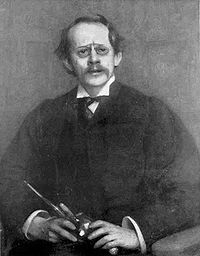 |
Joseph John Thomson J. J. Thomson Sir Joseph John "J. J." Thomson, OM, FRS was a British physicist and Nobel laureate. He is credited for the discovery of the electron and of isotopes, and the invention of the mass spectrometer... |
United Kingdom | "[for] his theoretical and experimental investigations on the conduction of electricity by gases" |
| 1907 |  |
Albert Abraham Michelson Albert Abraham Michelson Albert Abraham Michelson was an American physicist known for his work on the measurement of the speed of light and especially for the Michelson-Morley experiment. In 1907 he received the Nobel Prize in Physics... |
United States United States The United States of America is a federal constitutional republic comprising fifty states and a federal district... |
"for his optical precision instruments and the spectroscopic and metrological investigations carried out with their aid" |
| 1908 |  |
Gabriel Lippmann Gabriel Lippmann Jonas Ferdinand Gabriel Lippmann was a Franco-Luxembourgish physicist and inventor, and Nobel laureate in physics for his method of reproducing colours photographically based on the phenomenon of interference.... |
France | "for his method of reproducing colours photographically Lippmann plate Gabriel Lippmann conceived a two-step method to record and reproduce colours, known as:* direct photochromes,* interference photochromes,* Lippmann photochromes,* Photography in natural colours by direct exposure in the camera... based on the phenomenon of interference" |
| 1909 | 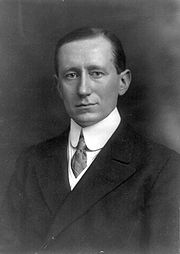 |
Guglielmo Marconi Guglielmo Marconi Guglielmo Marconi was an Italian inventor, known as the father of long distance radio transmission and for his development of Marconi's law and a radio telegraph system. Marconi is often credited as the inventor of radio, and indeed he shared the 1909 Nobel Prize in Physics with Karl Ferdinand... |
Italy Italy Italy , officially the Italian Republic languages]] under the European Charter for Regional or Minority Languages. In each of these, Italy's official name is as follows:;;;;;;;;), is a unitary parliamentary republic in South-Central Europe. To the north it borders France, Switzerland, Austria and... |
"[for] their contributions to the development of wireless telegraphy Invention Of Radio Within the history of radio, several people were involved in the invention of radio and there were many key inventions in what became the modern systems of wireless. Radio development began as "wireless telegraphy"... " |
 |
Karl Ferdinand Braun Karl Ferdinand Braun Karl Ferdinand Braun was a German inventor, physicist and Nobel laureate in physics. Braun contributed significantly to the development of the radio and television technology: he shared with Guglielmo Marconi the 1909 Nobel Prize in Physics.-Biography:Braun was born in Fulda, Germany, and... |
Germany | ||
| 1910 | 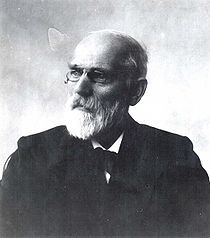 |
Johannes Diderik van der Waals Johannes Diderik van der Waals Johannes Diderik van der Waals was a Dutch theoretical physicist and thermodynamicist famous for his work on an equation of state for gases and liquids.... |
Netherlands | "for his work on the equation of state for gases and liquids" |
| 1911 | Wilhelm Wien Wilhelm Wien Wilhelm Carl Werner Otto Fritz Franz Wien was a German physicist who, in 1893, used theories about heat and electromagnetism to deduce Wien's displacement law, which calculates the emission of a blackbody at any temperature from the emission at any one reference temperature.He also formulated an... |
Germany | "for his discoveries regarding the laws governing the radiation of heat" | |
| 1912 |  |
Nils Gustaf Dalén Gustaf Dalén Nils Gustaf Dalén was a Swedish Nobel Laureate and industrialist, the founder of the AGA company and inventor of the AGA cooker and the Dalén light... |
Sweden Sweden Sweden , officially the Kingdom of Sweden , is a Nordic country on the Scandinavian Peninsula in Northern Europe. Sweden borders with Norway and Finland and is connected to Denmark by a bridge-tunnel across the Öresund.... |
"for his invention of automatic valves Sun valve A sun valve is a form of flow control valve, notable because it earned its inventor Gustaf Dalén the Nobel prize in physics.... designed to be used in combination with gas accumulators in lighthouses and buoys" |
| 1913 |  |
Heike Kamerlingh-Onnes Heike Kamerlingh Onnes Heike Kamerlingh Onnes was a Dutch physicist and Nobel laureate. He pioneered refrigeration techniques, and he explored how materials behaved when cooled to nearly absolute zero. He was the first to liquify helium... |
Netherlands | "for his investigations on the properties of matter at low temperatures which led, inter alia, to the production of liquid helium Liquid helium Helium exists in liquid form only at extremely low temperatures. The boiling point and critical point depend on the isotope of the helium; see the table below for values. The density of liquid helium-4 at its boiling point and 1 atmosphere is approximately 0.125 g/mL Helium-4 was first liquefied... " |
| 1914 |  |
Max von Laue Max von Laue Max Theodor Felix von Laue was a German physicist who won the Nobel Prize in Physics in 1914 for his discovery of the diffraction of X-rays by crystals... |
Germany | "For his discovery of the diffraction of X-rays X-ray crystallography X-ray crystallography is a method of determining the arrangement of atoms within a crystal, in which a beam of X-rays strikes a crystal and causes the beam of light to spread into many specific directions. From the angles and intensities of these diffracted beams, a crystallographer can produce a... by crystals", an important step in the development of X-ray spectroscopy X-ray spectroscopy X-ray spectroscopy is a gathering name for several spectroscopic techniques for characterization of materials by using x-ray excitation.-Characteristic X-ray Spectroscopy:... . |
| 1915 | 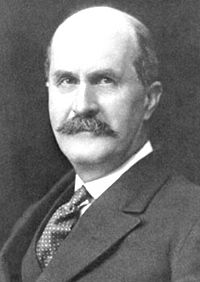 |
William Henry Bragg William Henry Bragg Sir William Henry Bragg OM, KBE, PRS was a British physicist, chemist, mathematician and active sportsman who uniquely shared a Nobel Prize with his son William Lawrence Bragg - the 1915 Nobel Prize in Physics... |
United Kingdom | "For their services in the analysis of crystal structure Crystal structure In mineralogy and crystallography, crystal structure is a unique arrangement of atoms or molecules in a crystalline liquid or solid. A crystal structure is composed of a pattern, a set of atoms arranged in a particular way, and a lattice exhibiting long-range order and symmetry... by means of X-rays", an important step in the development of X-ray crystallography X-ray crystallography X-ray crystallography is a method of determining the arrangement of atoms within a crystal, in which a beam of X-rays strikes a crystal and causes the beam of light to spread into many specific directions. From the angles and intensities of these diffracted beams, a crystallographer can produce a... |
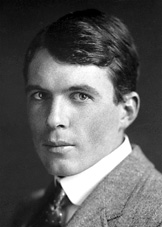 |
William Lawrence Bragg William Lawrence Bragg Sir William Lawrence Bragg CH OBE MC FRS was an Australian-born British physicist and X-ray crystallographer, discoverer of the Bragg law of X-ray diffraction, which is basic for the determination of crystal structure. He was joint winner of the Nobel Prize for Physics in 1915. He was knighted... |
United Kingdom | ||
| 1916 | Not awarded | |||
| 1917 | 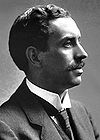 |
Charles Glover Barkla Charles Glover Barkla Charles Glover Barkla was a British physicist, and the winner of the Nobel Prize in Physics in 1917 for his work in X-ray spectroscopy and related areas in the study of X-rays .-Biography:... |
United Kingdom | "For his discovery of the characteristic Röntgen radiation X-ray fluorescence X-ray fluorescence is the emission of characteristic "secondary" X-rays from a material that has been excited by bombarding with high-energy X-rays or gamma rays... of the elements", another important step in the development of X-ray spectroscopy X-ray spectroscopy X-ray spectroscopy is a gathering name for several spectroscopic techniques for characterization of materials by using x-ray excitation.-Characteristic X-ray Spectroscopy:... |
| 1918 | Max Planck Max Planck Max Karl Ernst Ludwig Planck, ForMemRS, was a German physicist who actualized the quantum physics, initiating a revolution in natural science and philosophy. He is regarded as the founder of the quantum theory, for which he received the Nobel Prize in Physics in 1918.-Life and career:Planck came... |
Germany | "[for] the services he rendered to the advancement of Physics by his discovery of energy quanta Quantum mechanics Quantum mechanics, also known as quantum physics or quantum theory, is a branch of physics providing a mathematical description of much of the dual particle-like and wave-like behavior and interactions of energy and matter. It departs from classical mechanics primarily at the atomic and subatomic... " |
|
| 1919 | Johannes Stark Johannes Stark Johannes Stark was a German physicist, and Physics Nobel Prize laureate who was closely involved with the Deutsche Physik movement under the Nazi regime.-Early years:... |
Germany | "for his discovery of the Doppler effect Doppler effect The Doppler effect , named after Austrian physicist Christian Doppler who proposed it in 1842 in Prague, is the change in frequency of a wave for an observer moving relative to the source of the wave. It is commonly heard when a vehicle sounding a siren or horn approaches, passes, and recedes from... in canal rays and the splitting of spectral line Spectral line A spectral line is a dark or bright line in an otherwise uniform and continuous spectrum, resulting from a deficiency or excess of photons in a narrow frequency range, compared with the nearby frequencies.- Types of line spectra :... s in electric field Electric field In physics, an electric field surrounds electrically charged particles and time-varying magnetic fields. The electric field depicts the force exerted on other electrically charged objects by the electrically charged particle the field is surrounding... s" |
|
| 1920 |  |
Charles Édouard Guillaume Charles Edouard Guillaume Charles Édouard Guillaume was a Swiss physicist who received the Nobel Prize in Physics in 1920 in recognition of the service he had rendered to precision measurements in physics by his discovery of anomalies in nickel steel alloys.Guillaume is known for his discovery of nickel-steel alloys he... |
Switzerland Switzerland Switzerland name of one of the Swiss cantons. ; ; ; or ), in its full name the Swiss Confederation , is a federal republic consisting of 26 cantons, with Bern as the seat of the federal authorities. The country is situated in Western Europe,Or Central Europe depending on the definition.... |
"[for] the service he has rendered to precision measurements in physics by his discovery of anomalies in nickel-steel alloys" |
| 1921 | 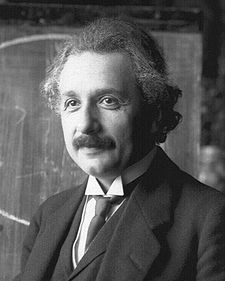 |
Albert Einstein Albert Einstein Albert Einstein was a German-born theoretical physicist who developed the theory of general relativity, effecting a revolution in physics. For this achievement, Einstein is often regarded as the father of modern physics and one of the most prolific intellects in human history... |
Germany | "for his services to Theoretical Physics, and especially for his discovery of the law of the photoelectric effect Photoelectric effect In the photoelectric effect, electrons are emitted from matter as a consequence of their absorption of energy from electromagnetic radiation of very short wavelength, such as visible or ultraviolet light. Electrons emitted in this manner may be referred to as photoelectrons... " |
| 1922 |  |
Niels Bohr Niels Bohr Niels Henrik David Bohr was a Danish physicist who made foundational contributions to understanding atomic structure and quantum mechanics, for which he received the Nobel Prize in Physics in 1922. Bohr mentored and collaborated with many of the top physicists of the century at his institute in... |
Denmark Denmark Denmark is a Scandinavian country in Northern Europe. The countries of Denmark and Greenland, as well as the Faroe Islands, constitute the Kingdom of Denmark . It is the southernmost of the Nordic countries, southwest of Sweden and south of Norway, and bordered to the south by Germany. Denmark... |
"for his services in the investigation of the structure of atoms and of the radiation emanating from them" |
| 1923 |  |
Robert Andrews Millikan | United States | "for his work on the elementary charge of electricity and on the photoelectric effect Photoelectric effect In the photoelectric effect, electrons are emitted from matter as a consequence of their absorption of energy from electromagnetic radiation of very short wavelength, such as visible or ultraviolet light. Electrons emitted in this manner may be referred to as photoelectrons... " |
| 1924 | Manne Siegbahn Manne Siegbahn Karl Manne Georg Siegbahn FRS was a Swedish physicist who was awarded the Nobel Prize in Physics in 1924 "for his discoveries and research in the field of X-ray spectroscopy".... |
Sweden | "for his discoveries and research in the field of X-ray spectroscopy X-ray spectroscopy X-ray spectroscopy is a gathering name for several spectroscopic techniques for characterization of materials by using x-ray excitation.-Characteristic X-ray Spectroscopy:... " |
|
| 1925 |  |
James Franck James Franck James Franck was a German Jewish physicist and Nobel laureate.-Biography:Franck was born to Jacob Franck and Rebecca Nachum Drucker. Franck completed his Ph.D... |
Germany | "for their discovery of the laws governing the impact of an electron Electron The electron is a subatomic particle with a negative elementary electric charge. It has no known components or substructure; in other words, it is generally thought to be an elementary particle. An electron has a mass that is approximately 1/1836 that of the proton... upon an atom" |
| Gustav Hertz Gustav Ludwig Hertz Gustav Ludwig Hertz was a German experimental physicist and Nobel Prize winner, and a nephew of Heinrich Rudolf Hertz.-Biography:... |
Germany | |||
| 1926 |  |
Jean Baptiste Perrin Jean Baptiste Perrin Jean Baptiste Perrin was a French physicist and Nobel laureate.-Early years:Born in Lille, France, Perrin attended the École Normale Supérieure, the elite grande école in Paris. He became an assistant at the school during the period of 1894-97 when he began the study of cathode rays and X-rays... |
France | "for his work on the discontinuous structure of matter, and especially for his discovery of sedimentation equilibrium Sedimentation equilibrium Sedimentation equilibrium in a solution or suspension of different particles, such as molecules, exists when the rate of transport of each material in any one direction due to sedimentation equals the rate of transport in the opposite direction due to diffusion... " |
| 1927 |  |
Arthur Holly Compton Arthur Compton Arthur Holly Compton was an American physicist and Nobel laureate in physics for his discovery of the Compton effect. He served as Chancellor of Washington University in St. Louis from 1945 to 1953.-Early years:... |
United States | "for his discovery of the effect named after him" |
 |
Charles Thomson Rees Wilson Charles Thomson Rees Wilson Charles Thomson Rees Wilson, CH, FRS was a Scottish physicist and meteorologist who received the Nobel Prize in physics for his invention of the cloud chamber.- Biography:... |
United Kingdom | "for his method of making the paths of electrically charged particles visible by condensation of vapour" | |
| 1928 |  |
Owen Willans Richardson Owen Willans Richardson Sir Owen Willans Richardson, FRS was a British physicist who won the Nobel Prize in Physics in 1928 for his work on thermionic emission, which led to Richardson's Law.-Biography:... |
United Kingdom | "for his work on the thermionic phenomenon Thermionic emission Thermionic emission is the heat-induced flow of charge carriers from a surface or over a potential-energy barrier. This occurs because the thermal energy given to the carrier overcomes the binding potential, also known as work function of the metal. The charge carriers can be electrons or ions, and... and especially for the discovery of the law named after him" |
| 1929 |  |
Prince Louis-Victor Pierre Raymond de Broglie | France | "for his discovery of the wave nature of electrons" |
| 1930 | Chandrasekhara Venkata Raman | India India India , officially the Republic of India , is a country in South Asia. It is the seventh-largest country by geographical area, the second-most populous country with over 1.2 billion people, and the most populous democracy in the world... |
"for his work on the scattering of light and for the discovery of the effect named after him Raman scattering Raman scattering or the Raman effect is the inelastic scattering of a photon. It was discovered by Sir Chandrasekhara Venkata Raman and Kariamanickam Srinivasa Krishnan in liquids, and by Grigory Landsberg and Leonid Mandelstam in crystals.... " |
|
| 1931 | Not awarded | |||
| 1932 |  |
Werner Heisenberg Werner Heisenberg Werner Karl Heisenberg was a German theoretical physicist who made foundational contributions to quantum mechanics and is best known for asserting the uncertainty principle of quantum theory... |
Germany | "for the creation of quantum mechanics Quantum mechanics Quantum mechanics, also known as quantum physics or quantum theory, is a branch of physics providing a mathematical description of much of the dual particle-like and wave-like behavior and interactions of energy and matter. It departs from classical mechanics primarily at the atomic and subatomic... , the application of which has, inter alia, led to the discovery of the allotropic forms of hydrogen" |
| 1933 |  |
Erwin Schrödinger Erwin Schrödinger Erwin Rudolf Josef Alexander Schrödinger was an Austrian physicist and theoretical biologist who was one of the fathers of quantum mechanics, and is famed for a number of important contributions to physics, especially the Schrödinger equation, for which he received the Nobel Prize in Physics in 1933... |
Austria Austria Austria , officially the Republic of Austria , is a landlocked country of roughly 8.4 million people in Central Europe. It is bordered by the Czech Republic and Germany to the north, Slovakia and Hungary to the east, Slovenia and Italy to the south, and Switzerland and Liechtenstein to the... |
"for the discovery of new productive forms of atomic theory Atomic theory In chemistry and physics, atomic theory is a theory of the nature of matter, which states that matter is composed of discrete units called atoms, as opposed to the obsolete notion that matter could be divided into any arbitrarily small quantity... " |
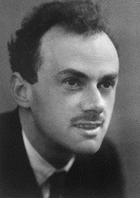 |
Paul Dirac Paul Dirac Paul Adrien Maurice Dirac, OM, FRS was an English theoretical physicist who made fundamental contributions to the early development of both quantum mechanics and quantum electrodynamics... |
United Kingdom | ||
| 1934 | Not awarded | |||
| 1935 |  |
James Chadwick James Chadwick Sir James Chadwick CH FRS was an English Nobel laureate in physics awarded for his discovery of the neutron.... |
United Kingdom | "for the discovery of the neutron Neutron The neutron is a subatomic hadron particle which has the symbol or , no net electric charge and a mass slightly larger than that of a proton. With the exception of hydrogen, nuclei of atoms consist of protons and neutrons, which are therefore collectively referred to as nucleons. The number of... " |
| 1936 |  |
Victor Francis Hess Victor Francis Hess Victor Francis Hess was an Austrian-American physicist, and Nobel laureate in physics, who discovered cosmic rays.-Early years:... |
Austria | "for his discovery of cosmic radiation Cosmic ray Cosmic rays are energetic charged subatomic particles, originating from outer space. They may produce secondary particles that penetrate the Earth's atmosphere and surface. The term ray is historical as cosmic rays were thought to be electromagnetic radiation... " |
 |
Carl David Anderson Carl David Anderson Carl David Anderson was an American physicist. He is best known for his discovery of the positron in 1932, an achievement for which he received the 1936 Nobel Prize in Physics, and of the muon in 1936.-Biography:... |
United States | "for his discovery of the positron Positron The positron or antielectron is the antiparticle or the antimatter counterpart of the electron. The positron has an electric charge of +1e, a spin of ½, and has the same mass as an electron... " |
|
| 1937 |  |
Clinton Joseph Davisson Clinton Davisson Clinton Joseph Davisson , was an American physicist who won the 1937 Nobel Prize in Physics for his discovery of electron diffraction. Davisson shared the Nobel Prize with George Paget Thomson, who independently discovered electron diffraction at about the same time as Davisson.-Early... |
United States | "for their experimental discovery of the diffraction of electrons Electron diffraction Electron diffraction refers to the wave nature of electrons. However, from a technical or practical point of view, it may be regarded as a technique used to study matter by firing electrons at a sample and observing the resulting interference pattern... by crystals" |
 |
George Paget Thomson George Paget Thomson Sir George Paget Thomson, FRS was an English physicist and Nobel laureate in physics recognised for his discovery with Clinton Davisson of the wave properties of the electron by electron diffraction.-Biography:... |
United Kingdom | ||
| 1938 | 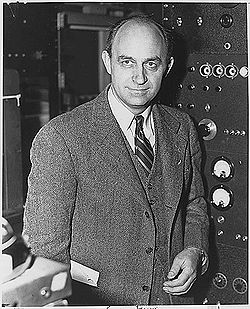 |
Enrico Fermi Enrico Fermi Enrico Fermi was an Italian-born, naturalized American physicist particularly known for his work on the development of the first nuclear reactor, Chicago Pile-1, and for his contributions to the development of quantum theory, nuclear and particle physics, and statistical mechanics... |
Italy | "for his demonstrations of the existence of new radioactive elements produced by neutron irradiation, and for his related discovery of nuclear reactions brought about by slow neutrons" |
| 1939 | 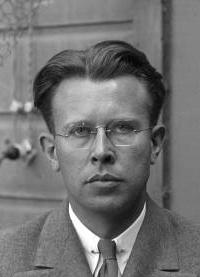 |
Ernest Lawrence Ernest Lawrence Ernest Orlando Lawrence was an American physicist and Nobel Laureate, known for his invention, utilization, and improvement of the cyclotron atom-smasher beginning in 1929, based on his studies of the works of Rolf Widerøe, and his later work in uranium-isotope separation for the Manhattan Project... |
United States | "for the invention and development of the cyclotron Cyclotron In technology, a cyclotron is a type of particle accelerator. In physics, the cyclotron frequency or gyrofrequency is the frequency of a charged particle moving perpendicularly to the direction of a uniform magnetic field, i.e. a magnetic field of constant magnitude and direction... and for results obtained with it, especially with regard to artificial radioactive elements" |
| 1940 | Not awarded | |||
| 1941 | Not awarded | |||
| 1942 | Not awarded | |||
| 1943 | Otto Stern Otto Stern Otto Stern was a German physicist and Nobel laureate in physics.-Biography:Stern was born in Sohrau, now Żory in the German Empire's Kingdom of Prussia and studied at Breslau, now Wrocław in Lower Silesia.... |
United States | "for his contribution to the development of the molecular ray method and his discovery of the magnetic moment Magnetic moment The magnetic moment of a magnet is a quantity that determines the force that the magnet can exert on electric currents and the torque that a magnetic field will exert on it... of the proton Proton The proton is a subatomic particle with the symbol or and a positive electric charge of 1 elementary charge. One or more protons are present in the nucleus of each atom, along with neutrons. The number of protons in each atom is its atomic number.... " |
|
| 1944 |  |
Isidor Isaac Rabi Isidor Isaac Rabi Isidor Isaac Rabi was a Galician-born American physicist and Nobel laureate recognized in 1944 for his discovery of nuclear magnetic resonance.-Early years:... |
United States | "for his resonance method for recording the magnetic properties of atomic nuclei" |
| 1945 | Wolfgang Pauli | Austria | "for the discovery of the Exclusion Principle, also called the Pauli principle" | |
| 1946 | Percy Williams Bridgman Percy Williams Bridgman Percy Williams Bridgman was an American physicist who won the 1946 Nobel Prize in Physics for his work on the physics of high pressures. He also wrote extensively on the scientific method and on other aspects of the philosophy of science.- Biography :Bridgman entered Harvard University in 1900,... |
United States | "for the invention of an apparatus to produce extremely high pressures, and for the discoveries he made there within the field of high pressure physics" | |
| 1947 |  |
Edward Victor Appleton Edward Victor Appleton Sir Edward Victor Appleton, GBE, KCB, FRS was an English physicist.-Biography:Appleton was born in Bradford, West Yorkshire and educated at Hanson Grammar School. At the age of 18 he won a scholarship to St John's College, Cambridge... |
United Kingdom | "for his investigations of the physics of the upper atmosphere especially for the discovery of the so-called Appleton layer" |
| 1948 | 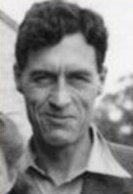 |
Patrick Maynard Stuart Blackett Patrick Blackett, Baron Blackett Patrick Maynard Stuart Blackett, Baron Blackett OM CH FRS was an English experimental physicist known for his work on cloud chambers, cosmic rays, and paleomagnetism. He also made a major contribution in World War II advising on military strategy and developing Operational Research... |
United Kingdom | "for his development of the Wilson cloud chamber Cloud chamber The cloud chamber, also known as the Wilson chamber, is a particle detector used for detecting ionizing radiation. In its most basic form, a cloud chamber is a sealed environment containing a supersaturated vapor of water or alcohol. When a charged particle interacts with the mixture, it ionizes it... method, and his discoveries therewith in the fields of nuclear physics and cosmic radiation" |
| 1949 | Hideki Yukawa Hideki Yukawa né , was a Japanese theoretical physicist and the first Japanese Nobel laureate.-Biography:Yukawa was born in Tokyo and grew up in Kyoto. In 1929, after receiving his degree from Kyoto Imperial University, he stayed on as a lecturer for four years. After graduation, he was interested in... |
Japan Japan Japan is an island nation in East Asia. Located in the Pacific Ocean, it lies to the east of the Sea of Japan, China, North Korea, South Korea and Russia, stretching from the Sea of Okhotsk in the north to the East China Sea and Taiwan in the south... |
"for his prediction of the existence of meson Meson In particle physics, mesons are subatomic particles composed of one quark and one antiquark, bound together by the strong interaction. Because mesons are composed of sub-particles, they have a physical size, with a radius roughly one femtometer: 10−15 m, which is about the size of a proton... s on the basis of theoretical work on nuclear forces" |
|
| 1950 | Cecil Frank Powell Cecil Frank Powell Cecil Frank Powell, FRS was a British physicist, and Nobel Prize in Physics laureate for his development of the photographic method of studying nuclear processes and for the resulting discovery of the pion , a heavy subatomic particle.Powell was born in Tonbridge, Kent, England, the son of a local... |
United Kingdom | "for his development of the photographic method of studying nuclear processes and his discoveries regarding mesons made with this method" | |
| 1951 |  |
John Douglas Cockcroft John Cockcroft Sir John Douglas Cockcroft OM KCB CBE FRS was a British physicist. He shared the Nobel Prize in Physics for splitting the atomic nucleus with Ernest Walton, and was instrumental in the development of nuclear power.... |
United Kingdom | "for their pioneer work on the transmutation of atomic nuclei by artificially accelerated atomic particles" |
| Ernest Thomas Sinton Walton Ernest Walton Ernest Thomas Sinton Walton was an Irish physicist and Nobel laureate for his work with John Cockcroft with "atom-smashing" experiments done at Cambridge University in the early 1930s, and so became the first person in history to artificially split the atom, thus ushering the nuclear age... |
Ireland Republic of Ireland Ireland , described as the Republic of Ireland , is a sovereign state in Europe occupying approximately five-sixths of the island of the same name. Its capital is Dublin. Ireland, which had a population of 4.58 million in 2011, is a constitutional republic governed as a parliamentary democracy,... |
|||
| 1952 |  |
Felix Bloch Felix Bloch Felix Bloch was a Swiss physicist, working mainly in the U.S.-Life and work:Bloch was born in Zürich, Switzerland to Jewish parents Gustav and Agnes Bloch. He was educated there and at the Eidgenössische Technische Hochschule, also in Zürich. Initially studying engineering he soon changed to physics... |
United States | "for their development of new methods for nuclear magnetic precision measurements and discoveries in connection therewith" |
| Edward Mills Purcell Edward Mills Purcell Edward Mills Purcell was an American physicist who shared the 1952 Nobel Prize for Physics for his independent discovery of nuclear magnetic resonance in liquids and in solids. Nuclear magnetic resonance has become widely used to study the molecular structure of pure materials and the... |
United States | |||
| 1953 |  |
Frits Zernike Frits Zernike Frits Zernike was a Dutch physicist and winner of the Nobel prize for physics in 1953 for his invention of the phase contrast microscope, an instrument that permits the study of internal cell structure without the need to stain and thus kill the cells.... |
Netherlands | "for his demonstration of the phase contrast method, especially for his invention of the phase contrast microscope" |
| 1954 |  |
Max Born Max Born Max Born was a German-born physicist and mathematician who was instrumental in the development of quantum mechanics. He also made contributions to solid-state physics and optics and supervised the work of a number of notable physicists in the 1920s and 30s... |
United Kingdom | "for his fundamental research in quantum mechanics Quantum mechanics Quantum mechanics, also known as quantum physics or quantum theory, is a branch of physics providing a mathematical description of much of the dual particle-like and wave-like behavior and interactions of energy and matter. It departs from classical mechanics primarily at the atomic and subatomic... , especially for his statistical interpretation of the wavefunction" |
| Walther Bothe Walther Bothe Walther Wilhelm Georg Bothe was a German nuclear physicist, who shared the Nobel Prize in Physics in 1954 with Max Born.... |
West Germany West Germany West Germany is the common English, but not official, name for the Federal Republic of Germany or FRG in the period between its creation in May 1949 to German reunification on 3 October 1990.... |
"for the coincidence method and his discoveries made therewith" | ||
| 1955 |  |
Willis Eugene Lamb | United States | "for his discoveries concerning the fine structure Fine structure In atomic physics, the fine structure describes the splitting of the spectral lines of atoms due to first order relativistic corrections.The gross structure of line spectra is the line spectra predicted by non-relativistic electrons with no spin. For a hydrogenic atom, the gross structure energy... of the hydrogen spectrum" |
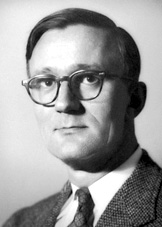 |
Polykarp Kusch Polykarp Kusch Polykarp Kusch was a German-American physicist. In 1955 he was jointly awarded the Nobel Prize for Physics with Willis Eugene Lamb for his accurate determination that the magnetic moment of the electron was greater than its theoretical value, thus leading to reconsideration of—and... |
United States | "for his precision determination of the magnetic moment of the electron" | |
| 1956 |  |
John Bardeen John Bardeen John Bardeen was an American physicist and electrical engineer, the only person to have won the Nobel Prize in Physics twice: first in 1956 with William Shockley and Walter Brattain for the invention of the transistor; and again in 1972 with Leon Neil Cooper and John Robert Schrieffer for a... |
United States | "for their researches on semiconductors and their discovery of the transistor Transistor A transistor is a semiconductor device used to amplify and switch electronic signals and power. It is composed of a semiconductor material with at least three terminals for connection to an external circuit. A voltage or current applied to one pair of the transistor's terminals changes the current... effect" |
| Walter Houser Brattain Walter Houser Brattain Walter Houser Brattain was an American physicist at Bell Labs who, along with John Bardeen and William Shockley, invented the transistor. They shared the 1956 Nobel Prize in Physics for their invention. He devoted much of his life to research on surface states.- Early life and education :He was... |
United States | |||
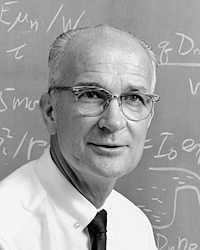 |
William Bradford Shockley William Shockley William Bradford Shockley Jr. was an American physicist and inventor. Along with John Bardeen and Walter Houser Brattain, Shockley co-invented the transistor, for which all three were awarded the 1956 Nobel Prize in Physics.Shockley's attempts to commercialize a new transistor design in the 1950s... |
United States | ||
| 1957 |  |
Tsung-Dao Lee Tsung-Dao Lee Tsung-Dao Lee is a Chinese born-American physicist, well known for his work on parity violation, the Lee Model, particle physics, relativistic heavy ion physics, nontopological solitons and soliton stars.... |
China China Chinese civilization may refer to:* China for more general discussion of the country.* Chinese culture* Greater China, the transnational community of ethnic Chinese.* History of China* Sinosphere, the area historically affected by Chinese culture... |
"for their penetrating investigation of the so-called parity laws which has led to important discoveries regarding the elementary particles" |
 |
Chen Ning Yang | China | ||
| 1958 | Pavel Alekseyevich Cherenkov Pavel Alekseyevich Cherenkov Pavel Alekseyevich Cherenkov was a Soviet physicist who shared the Nobel Prize in physics in 1958 with Ilya Frank and Igor Tamm for the discovery of Cherenkov radiation, made in 1934.-Biography:... |
Soviet Union Soviet Union The Soviet Union , officially the Union of Soviet Socialist Republics , was a constitutionally socialist state that existed in Eurasia between 1922 and 1991.... |
"for the discovery and the interpretation of the Cherenkov effect" | |
 |
Il'ya Frank Ilya Frank Ilya Mikhailovich Frank was a Soviet winner of the Nobel Prize for Physics in 1958 jointly with Pavel Alekseyevich Cherenkov and Igor Y. Tamm, also of the Soviet Union. He received the award for his work in explaining the phenomenon of Cherenkov radiation... |
Soviet Union | ||
| Igor Yevgenyevich Tamm Igor Tamm Igor Yevgenyevich Tamm was a Soviet physicist and Nobel laureate who received most prestigious Nobel Prize in Physics, jointly with Pavel Alekseyevich Cherenkov and Ilya Frank, for the discovery of Cherenkov radiation, made in 1934.-Biography:Tamm was born in Vladivostok, Russian Empire , in a... |
Soviet Union | |||
| 1959 | Owen Chamberlain Owen Chamberlain Owen Chamberlain was an American physicist, and Nobel laureate in physics for his discovery, with collaborator Emilio Segrè, of antiprotons, a sub-atomic antiparticle.-Biography:... |
United States | "for their discovery of the antiproton Antiproton The antiproton is the antiparticle of the proton. Antiprotons are stable, but they are typically short-lived since any collision with a proton will cause both particles to be annihilated in a burst of energy.... " |
|
| Emilio Gino Segrè Emilio G. Segrè Emilio Gino Segrè was an Italian-born, naturalized American, physicist and Nobel laureate in physics, who with Owen Chamberlain, discovered antiprotons, a sub-atomic antiparticle.-Biography:... |
Italy | |||
| 1960 | 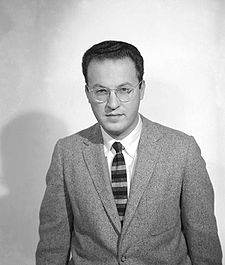 |
Donald Arthur Glaser Donald A. Glaser Donald Arthur Glaser , is an American physicist, neurobiologist, and Nobel Prize in Physics laureate for his invention of the Bubble chamber used in subatomic particle physics.... |
United States | "for the invention of the bubble chamber Bubble chamber A bubble chamber is a vessel filled with a superheated transparent liquid used to detect electrically charged particles moving through it. It was invented in 1952 by Donald A. Glaser, for which he was awarded the 1960 Nobel Prize in Physics... " |
| 1961 | 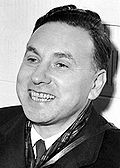 |
Robert Hofstadter Robert Hofstadter Robert Hofstadter was an American physicist. He was the joint winner of the 1961 Nobel Prize in Physics "for his pioneering studies of electron scattering in atomic nuclei and for his consequent discoveries concerning the structure of nucleons."-Biography :Born in New York City, he entered City... |
United States | "for his pioneering studies of electron scattering in atomic nuclei and for his thereby achieved discoveries concerning the structure of the nucleons" |
| Rudolf Ludwig Mössbauer | West Germany | "for his researches concerning the resonance absorption of gamma radiation and his discovery in this connection of the effect Mössbauer effect The Mössbauer effect, or recoilless nuclear resonance fluorescence, is a physical phenomenon discovered by Rudolf Mössbauer in 1958. It involves the resonant and recoil-free emission and absorption of γ radiation by atomic nuclei bound in a solid... which bears his name" |
||
| 1962 | Lev Davidovich Landau Lev Landau Lev Davidovich Landau was a prominent Soviet physicist who made fundamental contributions to many areas of theoretical physics... |
Soviet Union | "for his pioneering theories for condensed matter Condensed Matter Condensed matter may refer to several things*Condensed matter physics, the study of the physical properties of condensed phases of matter*European Physical Journal B: Condensed Matter and Complex Systems, a scientific journal published by EDP sciences... , especially liquid helium Liquid helium Helium exists in liquid form only at extremely low temperatures. The boiling point and critical point depend on the isotope of the helium; see the table below for values. The density of liquid helium-4 at its boiling point and 1 atmosphere is approximately 0.125 g/mL Helium-4 was first liquefied... " |
|
| 1963 | 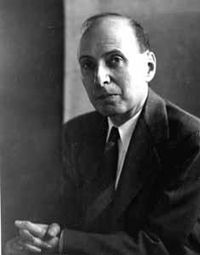 |
Eugene Paul Wigner | Hungary - United States | "for his contributions to the theory of the atomic nucleus and the elementary particles, particularly through the discovery and application of fundamental symmetry principles" |
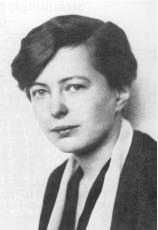 |
Maria Goeppert-Mayer | United States | "for their discoveries concerning nuclear shell structure" | |
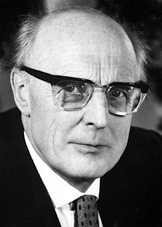 |
J. Hans D. Jensen J. Hans D. Jensen Johannes Hans Daniel Jensen was a German nuclear physicist. During World War II, he worked on the German nuclear energy project, known as the Uranium Club, in which he made contributions to the separation of uranium isotopes. After the war Jensen was a professor at the University of Heidelberg... |
West Germany | ||
| 1964 | Nicolay Gennadiyevich Basov Nikolay Basov Nikolay Gennadiyevich Basov was a Soviet physicist and educator. For his fundamental work in the field of quantum electronics that led to the development of laser and maser, Basov shared the 1964 Nobel Prize in Physics with Alexander Prokhorov and Charles Hard Townes.-Early life:Basov was born in... |
Soviet Union | "for fundamental work in the field of quantum electronics, which has led to the construction of oscillators and amplifier Amplifier Generally, an amplifier or simply amp, is a device for increasing the power of a signal.In popular use, the term usually describes an electronic amplifier, in which the input "signal" is usually a voltage or a current. In audio applications, amplifiers drive the loudspeakers used in PA systems to... s based on the maser Maser A maser is a device that produces coherent electromagnetic waves through amplification by stimulated emission. Historically, “maser” derives from the original, upper-case acronym MASER, which stands for "Microwave Amplification by Stimulated Emission of Radiation"... -laser Laser A laser is a device that emits light through a process of optical amplification based on the stimulated emission of photons. The term "laser" originated as an acronym for Light Amplification by Stimulated Emission of Radiation... principle" |
|
| Aleksandr Prokhorov Aleksandr Mikhailovich Prokhorov Alexander Mikhaylovich Prokhorov was a Russian physicist known for his pioneering research on lasers and masers for which he shared the Nobel Prize in Physics in 1964 with Charles Hard Townes and Nikolay Basov.... |
Soviet Union | |||
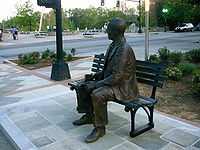 |
Charles Hard Townes Charles Hard Townes Charles Hard Townes is an American Nobel Prize-winning physicist and educator. Townes is known for his work on the theory and application of the maser, on which he got the fundamental patent, and other work in quantum electronics connected with both maser and laser devices. He shared the Nobel... |
United States | ||
| 1965 | Richard Phillips Feynman Richard Feynman Richard Phillips Feynman was an American physicist known for his work in the path integral formulation of quantum mechanics, the theory of quantum electrodynamics and the physics of the superfluidity of supercooled liquid helium, as well as in particle physics... |
United States | "for their fundamental work in quantum electrodynamics Quantum electrodynamics Quantum electrodynamics is the relativistic quantum field theory of electrodynamics. In essence, it describes how light and matter interact and is the first theory where full agreement between quantum mechanics and special relativity is achieved... , with deep-ploughing consequences for the physics of elementary particles" |
|
 |
Julian Schwinger Julian Schwinger Julian Seymour Schwinger was an American theoretical physicist. He is best known for his work on the theory of quantum electrodynamics, in particular for developing a relativistically invariant perturbation theory, and for renormalizing QED to one loop order.Schwinger is recognized as one of the... |
United States | ||
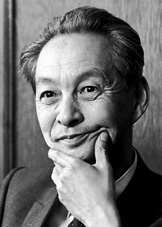 |
Sin-Itiro Tomonaga Sin-Itiro Tomonaga was a Japanese physicist, influential in the development of quantum electrodynamics, work for which he was jointly awarded the Nobel Prize in Physics in 1965 along with Richard Feynman and Julian Schwinger.-Biography:... |
Japan | ||
| 1966 | 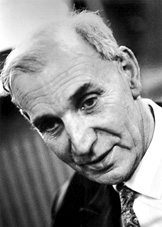 |
Alfred Kastler Alfred Kastler Alfred Kastler was a French physicist, and Nobel Prize laureate.Kastler was born in Guebwiller and later attended the Lycée Bartholdi in Colmar, Alsace, and École Normale Supérieure in Paris in 1921... |
France | "for the discovery and development of optical methods for studying Hertzian resonances in atoms" |
| 1967 |  |
Hans Albrecht Bethe Hans Bethe Hans Albrecht Bethe was a German-American nuclear physicist, and Nobel laureate in physics for his work on the theory of stellar nucleosynthesis. A versatile theoretical physicist, Bethe also made important contributions to quantum electrodynamics, nuclear physics, solid-state physics and... |
United States | "for his contributions to the theory of nuclear reactions, especially his discoveries concerning the energy production in star Star A star is a massive, luminous sphere of plasma held together by gravity. At the end of its lifetime, a star can also contain a proportion of degenerate matter. The nearest star to Earth is the Sun, which is the source of most of the energy on Earth... s" |
| 1968 |  |
Luis Walter Alvarez | United States | "for his decisive contributions to elementary particle physics, in particular the discovery of a large number of resonance states, made possible through his development of the technique of using hydrogen bubble chamber Bubble chamber A bubble chamber is a vessel filled with a superheated transparent liquid used to detect electrically charged particles moving through it. It was invented in 1952 by Donald A. Glaser, for which he was awarded the 1960 Nobel Prize in Physics... and data analysis" |
| 1969 | 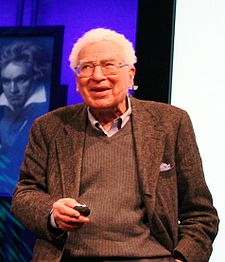 |
Murray Gell-Mann Murray Gell-Mann Murray Gell-Mann is an American physicist and linguist who received the 1969 Nobel Prize in physics for his work on the theory of elementary particles... |
United States | "for his contributions and discoveries concerning the classification of elementary particles and their interactions" |
| 1970 |  |
Hannes Olof Gösta Alfvén Hannes Alfvén Hannes Olof Gösta Alfvén was a Swedish electrical engineer, plasma physicist and winner of the 1970 Nobel Prize in Physics for his work on magnetohydrodynamics . He described the class of MHD waves now known as Alfvén waves... |
Sweden | "for fundamental work and discoveries in magneto-hydrodynamics with fruitful applications in different parts of plasma physics" |
| Louis Néel | France | "for fundamental work and discoveries concerning antiferromagnetism and ferrimagnetism which have led to important applications in solid state physics" | ||
| 1971 | Dennis Gabor Dennis Gabor Dennis Gabor CBE, FRS was a Hungarian-British electrical engineer and inventor, most notable for inventing holography, for which he later received the 1971 Nobel Prize in Physics.... |
Hungary - United Kingdom | "for his invention and development of the holographic method Holography Holography is a technique that allows the light scattered from an object to be recorded and later reconstructed so that when an imaging system is placed in the reconstructed beam, an image of the object will be seen even when the object is no longer present... " |
|
| 1972 |  |
John Bardeen John Bardeen John Bardeen was an American physicist and electrical engineer, the only person to have won the Nobel Prize in Physics twice: first in 1956 with William Shockley and Walter Brattain for the invention of the transistor; and again in 1972 with Leon Neil Cooper and John Robert Schrieffer for a... |
United States | "for their jointly developed theory of superconductivity Superconductivity Superconductivity is a phenomenon of exactly zero electrical resistance occurring in certain materials below a characteristic temperature. It was discovered by Heike Kamerlingh Onnes on April 8, 1911 in Leiden. Like ferromagnetism and atomic spectral lines, superconductivity is a quantum... , usually called the BCS-theory" |
| Leon Neil Cooper Leon Cooper Leon N Cooper is an American physicist and Nobel Prize laureate, who with John Bardeen and John Robert Schrieffer, developed the BCS theory of superconductivity... |
United States | |||
| John Robert Schrieffer John Robert Schrieffer John Robert Schrieffer is an American physicist and, with John Bardeen and Leon N Cooper, recipient of the 1972 Nobel Prize for Physics for developing the BCS theory, the first successful microscopic theory of superconductivity.-Biography:... |
United States | |||
| 1973 | Leo Esaki Leo Esaki Reona Esaki also known as Leo Esaki is a Japanese physicist who shared the Nobel Prize in Physics in 1973 with Ivar Giaever and Brian David Josephson for his discovery of the phenomenon of electron tunneling. He is known for his invention of the Esaki diode, which exploited that phenomenon... |
Japan | "for their experimental discoveries regarding tunneling phenomena in semiconductor Semiconductor A semiconductor is a material with electrical conductivity due to electron flow intermediate in magnitude between that of a conductor and an insulator. This means a conductivity roughly in the range of 103 to 10−8 siemens per centimeter... s and superconductors, respectively" |
|
| Ivar Giaever Ivar Giaever Ivar Giaever is a physicist who shared the Nobel Prize in Physics in 1973 with Leo Esaki and Brian Josephson "for their discoveries regarding tunnelling phenomena in solids". Giaever's share of the prize was specifically for his "experimental discoveries regarding tunnelling phenomena in ...... |
United States Norway |
|||
| Brian David Josephson Brian David Josephson Brian David Josephson, FRS is a Welsh physicist. He became a Nobel Prize laureate in 1973 for the prediction of the eponymous Josephson effect.... |
United Kingdom | "for his theoretical predictions of the properties of a supercurrent through a tunnel barrier, in particular those phenomena which are generally known as the Josephson effect Josephson effect The Josephson effect is the phenomenon of supercurrent across two superconductors coupled by a weak link... " |
||
| 1974 | Martin Ryle Martin Ryle Sir Martin Ryle was an English radio astronomer who developed revolutionary radio telescope systems and used them for accurate location and imaging of weak radio sources... |
United Kingdom | "for their pioneering research in radio astrophysics Radio astronomy Radio astronomy is a subfield of astronomy that studies celestial objects at radio frequencies. The initial detection of radio waves from an astronomical object was made in the 1930s, when Karl Jansky observed radiation coming from the Milky Way. Subsequent observations have identified a number of... : Ryle for his observations and inventions, in particular of the aperture synthesis Aperture synthesis Aperture synthesis or synthesis imaging is a type of interferometry that mixes signals from a collection of telescopes to produce images having the same angular resolution as an instrument the size of the entire collection... technique, and Hewish for his decisive role in the discovery of pulsar Pulsar A pulsar is a highly magnetized, rotating neutron star that emits a beam of electromagnetic radiation. The radiation can only be observed when the beam of emission is pointing towards the Earth. This is called the lighthouse effect and gives rise to the pulsed nature that gives pulsars their name... s" |
|
| Antony Hewish Antony Hewish Antony Hewish FRS is a British radio astronomer who won the Nobel Prize for Physics in 1974 for his work on the development of radio aperture synthesis and its role in the discovery of pulsars... |
United Kingdom | |||
| 1975 | Aage Bohr | Denmark | "for the discovery of the connection between collective motion and particle motion in atomic nuclei and the development of the theory of the structure of the atomic nucleus based on this connection" | |
| Ben Roy Mottelson Ben Roy Mottelson Benjamin Roy Mottelson is an American-born Danish nuclear physicist. He won the 1975 Nobel Prize in Physics for his work on the non-spherical geometry of atomic nuclei.... |
Denmark | |||
| Leo James Rainwater James Rainwater Leo James Rainwater was an American physicist who shared the Nobel Prize for Physics in 1975 for his part in determining the asymmetrical shapes of certain atomic nuclei.-Biography:... |
United States | |||
| 1976 |  |
Burton Richter Burton Richter Burton Richter is a Nobel Prize-winning American physicist. He led the Stanford Linear Accelerator Center team which co-discovered the J/ψ meson in 1974, alongside the Brookhaven National Laboratory team led by Samuel Ting. This discovery was part of the so-called November Revolution of particle... |
United States | "for their pioneering work in the discovery of a heavy elementary particle of a new kind" |
| Samuel Chao Chung Ting Samuel C. C. Ting Samuel Chao Chung Ting is an American physicist who received the Nobel Prize in 1976, with Burton Richter, for discovering the subatomic J/ψ particle... |
United States | |||
| 1977 |  |
Philip Warren Anderson Philip Warren Anderson Philip Warren Anderson is an American physicist and Nobel laureate. Anderson has made contributions to the theories of localization, antiferromagnetism and high-temperature superconductivity.- Biography :... |
United States | "for their fundamental theoretical investigations of the electronic structure of magnetic and disordered systems" |
| Nevill Francis Mott Nevill Francis Mott Sir Nevill Francis Mott, CH, FRS was an English physicist. He won the Nobel Prize for Physics in 1977 for his work on the electronic structure of magnetic and disordered systems, especially amorphous semiconductors. The award was shared with Philip W. Anderson and J. H... |
United Kingdom | |||
| John Hasbrouck Van Vleck John Hasbrouck van Vleck John Hasbrouck Van Vleck was an American physicist and mathematician, co-awarded the 1977 Nobel Prize in Physics, for his contributions to the understanding of the behavior of electrons in magnetic solids.... |
United States | |||
| 1978 |  |
Pyotr Leonidovich Kapitsa Pyotr Kapitsa Pyotr Leonidovich Kapitsa was a prominent Soviet/Russian physicist and Nobel laureate.-Biography:Kapitsa was born in the city of Kronstadt and graduated from the Petrograd Polytechnical Institute in 1918. He worked for over ten years with Ernest Rutherford in the Cavendish Laboratory in Cambridge... |
Soviet Union | "for his basic inventions and discoveries in the area of low-temperature physics" |
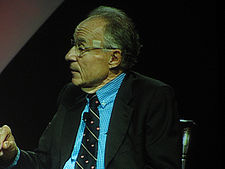 |
Arno Allan Penzias Arno Allan Penzias Arno Allan Penzias is an American physicist and Nobel laureate in physics.-Early life and education:Penzias was born in Munich, Germany. At age six he was among the Jewish children evacuated to Britain as part of the Kindertransport rescue operation... |
United States | "for their discovery of cosmic microwave background radiation Cosmic microwave background radiation In cosmology, cosmic microwave background radiation is thermal radiation filling the observable universe almost uniformly.... " |
|
 |
Robert Woodrow Wilson Robert Woodrow Wilson For the American President, see Woodrow Wilson.Robert Woodrow Wilson is an American astronomer, 1978 Nobel laureate in physics, who with Arno Allan Penzias discovered in 1964 the cosmic microwave background radiation... |
United States | ||
| 1979 | Sheldon Lee Glashow Sheldon Lee Glashow Sheldon Lee Glashow is a Nobel Prize winning American theoretical physicist. He is the Metcalf Professor of Mathematics and Physics at Boston University.-Birth and education:... |
United States | "for their contributions to the theory of the unified weak and electromagnetic interaction between elementary particles, including, inter alia, the prediction of the weak neutral current" | |
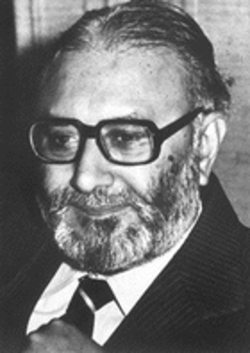 |
Abdus Salam Abdus Salam Mohammad Abdus Salam, NI, SPk Mohammad Abdus Salam, NI, SPk Mohammad Abdus Salam, NI, SPk (Urdu: محمد عبد السلام, pronounced , (January 29, 1926– November 21, 1996) was a Pakistani theoretical physicist and Nobel laureate in Physics for his work on the electroweak unification of the... |
Pakistan Pakistan Pakistan , officially the Islamic Republic of Pakistan is a sovereign state in South Asia. It has a coastline along the Arabian Sea and the Gulf of Oman in the south and is bordered by Afghanistan and Iran in the west, India in the east and China in the far northeast. In the north, Tajikistan... |
||
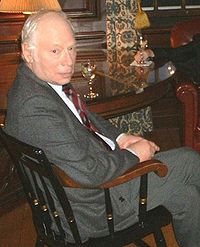 |
Steven Weinberg Steven Weinberg Steven Weinberg is an American theoretical physicist and Nobel laureate in Physics for his contributions with Abdus Salam and Sheldon Glashow to the unification of the weak force and electromagnetic interaction between elementary particles.... |
United States | ||
| 1980 | James Watson Cronin James Cronin James Watson Cronin is an American nuclear physicist.Cronin was born in Chicago, Illinois and attended Southern Methodist University in Dallas, Texas. Cronin and co-researcher Val Logsdon Fitch were awarded the 1980 Nobel Prize in Physics for a 1964 experiment that proved that certain subatomic... |
United States | "for the discovery of violations of fundamental symmetry principles in the decay of neutral K-mesons" | |
| Val Logsdon Fitch Val Logsdon Fitch Val Logsdon Fitch is an American nuclear physicist. A native of Merriman, Nebraska, he graduated from Gordon High School and attended Chadron State College for three years before being drafted into the U.S. army in 1943... |
United States | |||
| 1981 |  |
Nicolaas Bloembergen Nicolaas Bloembergen Nicolaas Bloembergen is a Dutch-American physicist and Nobel laureate.He received his Ph.D. degree from University of Leiden in 1948; while pursuing his PhD at Harvard, Bloembergen also worked part-time as a graduate research assistant for Edward Mills Purcell at the MIT Radiation Laboratory... |
United States | "for their contribution to the development of laser spectroscopy" |
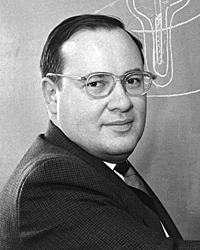 |
Arthur Leonard Schawlow Arthur Leonard Schawlow Arthur Leonard Schawlow was an American physicist. He is best remembered for his work on lasers, for which he shared the 1981 Nobel Prize in Physics with Nicolaas Bloembergen and Kai Siegbahn.-Biography:... |
United States | ||
| Kai Manne Börje Siegbahn Kai Siegbahn Kai Manne Börje Siegbahn was a Swedish physicist.He was born in Lund, Sweden, and his father Manne Siegbahn also won the Nobel Prize in Physics, in 1924. Siegbahn earned his doctorate at the University of Stockholm in 1944... |
Sweden | "for his contribution to the development of high-resolution electron spectroscopy" | ||
| 1982 | Kenneth G. Wilson Kenneth G. Wilson Kenneth Geddes Wilson is an American theoretical physicist and Nobel Prize winner.As an undergraduate at Harvard, he was a Putnam Fellow. He earned his PhD from Caltech in 1961, studying under Murray Gell-Mann.... |
United States | "for his theory for critical phenomena in connection with phase transitions" | |
| 1983 | Subrahmanyan Chandrasekhar Subrahmanyan Chandrasekhar Subrahmanyan Chandrasekhar, FRS ) was an Indian origin American astrophysicist who, with William A. Fowler, won the 1983 Nobel Prize for Physics for key discoveries that led to the currently accepted theory on the later evolutionary stages of massive stars... |
India United States |
"for his theoretical studies of the physical processes of importance to the structure and evolution of the stars" | |
| William Alfred Fowler William Alfred Fowler William Alfred "Willy" Fowler was an American astrophysicist and winner of the Nobel Prize for Physics in 1983. He should not be confused with the British astronomer Alfred Fowler.... |
United States | "for his theoretical and experimental studies of the nuclear reactions of importance in the formation of the chemical elements in the universe" | ||
| 1984 |  |
Carlo Rubbia Carlo Rubbia Carlo Rubbia Knight Grand Cross is an Italian particle physicist and inventor who shared the Nobel Prize in Physics in 1984 with Simon van der Meer for work leading to the discovery of the W and Z particles at CERN.-Biography:... |
Italy | "for their decisive contributions to the large project, which led to the discovery of the field particles W and Z, communicators of weak interaction" |
| Simon van der Meer Simon van der Meer Simon van der Meer was a Dutch particle accelerator physicist who shared the Nobel Prize in Physics in 1984 with Carlo Rubbia for contributions to the CERN project which led to the discovery of the W and Z particles, two of the most fundamental constituents of matter.-Biography:One of four... |
Netherlands | |||
| 1985 | 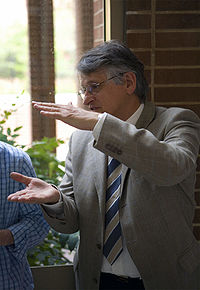 |
Klaus von Klitzing Klaus von Klitzing Klaus von Klitzing is a German physicist known for discovery of the integer quantum Hall Effect, for which he was awarded the 1985 Nobel Prize in Physics.... |
West Germany | "for the discovery of the quantized Hall effect" |
| 1986 | Ernst Ruska Ernst Ruska Ernst August Friedrich Ruska was a German physicist who won the Nobel Prize in Physics in 1986 for his work in electron optics, including the design of the first electron microscope.Ruska was born in Heidelberg... |
West Germany | "for his fundamental work in electron optics, and for the design of the first electron microscope Electron microscope An electron microscope is a type of microscope that uses a beam of electrons to illuminate the specimen and produce a magnified image. Electron microscopes have a greater resolving power than a light-powered optical microscope, because electrons have wavelengths about 100,000 times shorter than... " |
|
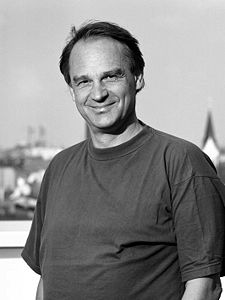 |
Gerd Binnig Gerd Binnig Gerd Binnig is a German physicist, and a Nobel laureate.He was born in Frankfurt am Main and played in the ruins of the city during his childhood. His family lived partly in Frankfurt and partly in Offenbach am Main, and he attended school in both cities. At the age of 10, he decided to become a... |
West Germany | "for their design of the scanning tunneling microscope Scanning tunneling microscope A scanning tunneling microscope is an instrument for imaging surfaces at the atomic level. Its development in 1981 earned its inventors, Gerd Binnig and Heinrich Rohrer , the Nobel Prize in Physics in 1986. For an STM, good resolution is considered to be 0.1 nm lateral resolution and... " |
|
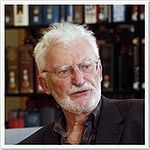 |
Heinrich Rohrer Heinrich Rohrer Heinrich Rohrer is a Swiss physicist who shared half of the 1986 Nobel Prize in Physics with Gerd Binnig for the design of the scanning tunneling microscope .-Biography:... |
Switzerland | ||
| 1987 | Johannes Georg Bednorz Johannes Georg Bednorz Johannes Georg Bednorz is a physicist at the IBM Zürich Research Laboratory. He is best known for his role in the discovery of high-temperature superconductivity, for which he shared the 1987 Nobel Prize in Physics.-Life and work:... |
West Germany | "for their important break-through in the discovery of superconductivity Superconductivity Superconductivity is a phenomenon of exactly zero electrical resistance occurring in certain materials below a characteristic temperature. It was discovered by Heike Kamerlingh Onnes on April 8, 1911 in Leiden. Like ferromagnetism and atomic spectral lines, superconductivity is a quantum... in ceramic Ceramic A ceramic is an inorganic, nonmetallic solid prepared by the action of heat and subsequent cooling. Ceramic materials may have a crystalline or partly crystalline structure, or may be amorphous... materials" |
|
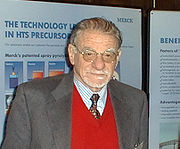 |
Karl Alexander Müller Karl Alexander Müller Karl Alexander Müller is a Swiss physicist and Nobel laureate. He received the Nobel Prize in Physics in 1987 with Johannes Georg Bednorz for their work in superconductivity in ceramic materials.-Biography:... |
Switzerland | ||
| 1988 |  |
Leon Max Lederman Leon M. Lederman Leon Max Lederman is an American experimental physicist and Nobel Prize in Physics laureate for his work with neutrinos. He is Director Emeritus of Fermi National Accelerator Laboratory in Batavia, Illinois, USA... |
United States | "for the neutrino Neutrino A neutrino is an electrically neutral, weakly interacting elementary subatomic particle with a half-integer spin, chirality and a disputed but small non-zero mass. It is able to pass through ordinary matter almost unaffected... beam method and the demonstration of the doublet structure of the lepton Lepton A lepton is an elementary particle and a fundamental constituent of matter. The best known of all leptons is the electron which governs nearly all of chemistry as it is found in atoms and is directly tied to all chemical properties. Two main classes of leptons exist: charged leptons , and neutral... s through the discovery of the muon neutrino" |
| Melvin Schwartz Melvin Schwartz Melvin Schwartz was an American physicist. He shared the 1988 Nobel Prize in Physics with Leon M. Lederman and Jack Steinberger for their development of the neutrino beam method and their demonstration of the doublet structure of the leptons through the discovery of the muon neutrino.He grew up in... |
United States | |||
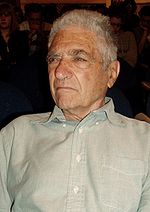 |
Jack Steinberger Jack Steinberger Jack Steinberger is a German-American physicist currently residing near Geneva, Switzerland. He co-discovered the muon neutrino, along with Leon Lederman and Melvin Schwartz, for which they were given the 1988 Nobel Prize in Physics.-Life:... |
United States | ||
| 1989 | Norman Foster Ramsey Norman Foster Ramsey, Jr. Norman Foster Ramsey, Jr. was an American physicist. A physics professor at Harvard University since 1947, Ramsey also held several posts with such government and international agencies as NATO and the United States Atomic Energy Commission... |
United States | "for the invention of the separated oscillatory fields method and its use in the hydrogen maser and other atomic clocks" | |
| Hans Georg Dehmelt Hans Georg Dehmelt Hans Georg Dehmelt is a German-born American physicist, who co-developed the ion trap technique with Wolfgang Paul, for which they shared one-half of the Nobel Prize in Physics in 1989... |
United States | "for the development of the ion trap Ion trap An ion trap is a combination of electric or magnetic fields that captures ions in a region of a vacuum system or tube. Ion traps have a number of scientific uses such as mass spectrometery and trapping ions while the ion's quantum state is manipulated... technique" |
||
| Wolfgang Paul Wolfgang Paul Wolfgang Paul was a German physicist, who co-developed the non-magnetic quadrupole mass filter which laid the foundation for what we now call an ion trap... |
West Germany | |||
| 1990 | Jerome I. Friedman Jerome Isaac Friedman Jerome Isaac Friedman is an American physicist. He was born in Chicago, Illinois to parents who emigrated to the US from Russia, and excelled particularly in art while growing up... |
United States | "for their pioneering investigations concerning deep inelastic scattering Deep Inelastic Scattering Deep inelastic scattering is the name given to a process used to probe the insides of hadrons , using electrons, muons and neutrinos. It provided the first convincing evidence of the reality of quarks, which up until that point had been considered by many to be a purely mathematical phenomenon... of electrons on protons and bound neutrons, which have been of essential importance for the development of the quark model Quark model In physics, the quark model is a classification scheme for hadrons in terms of their valence quarks—the quarks and antiquarks which give rise to the quantum numbers of the hadrons.... in particle physics" |
|
| Henry Way Kendall Henry Way Kendall Henry Way Kendall was an American particle physicist who won the Nobel Prize in Physics in 1990 jointly with Jerome Isaac Friedman and Richard E... |
United States | |||
| Richard E. Taylor Richard E. Taylor Richard Edward Taylor, is a Canadian-American professor at Stanford University. In 1990, he shared the Nobel Prize in Physics with Jerome Friedman and Henry Kendall "for their pioneering investigations concerning deep inelastic scattering of electrons on protons and bound neutrons, which have... |
Canada Canada Canada is a North American country consisting of ten provinces and three territories. Located in the northern part of the continent, it extends from the Atlantic Ocean in the east to the Pacific Ocean in the west, and northward into the Arctic Ocean... |
|||
| 1991 | Pierre-Gilles de Gennes Pierre-Gilles de Gennes Pierre-Gilles de Gennes was a French physicist and the Nobel Prize laureate in physics in 1991.-Biography:... |
France | "for discovering that methods developed for studying order phenomena in simple systems can be generalized to more complex forms of matter, in particular to liquid crystal Liquid crystal Liquid crystals are a state of matter that have properties between those of a conventional liquid and those of a solid crystal. For instance, an LC may flow like a liquid, but its molecules may be oriented in a crystal-like way. There are many different types of LC phases, which can be... s and polymer Polymer A polymer is a large molecule composed of repeating structural units. These subunits are typically connected by covalent chemical bonds... s" |
|
| 1992 | Georges Charpak Georges Charpak Georges Charpak was a French physicist who was awarded the Nobel Prize in Physics in 1992.-Life:Georges Charpak was born to Jewish family in the village of Dąbrowica in Poland . Charpak's family moved from Poland to Paris when he was seven years old... |
France | "for his invention and development of particle detectors, in particular the multiwire proportional chamber" | |
| 1993 | Russell Alan Hulse Russell Alan Hulse Russell Alan Hulse is an American physicist and winner of the Nobel Prize in Physics, shared with his thesis advisor Joseph Hooton Taylor Jr., "for the discovery of a new type of pulsar, a discovery that has opened up new possibilities for the study of gravitation"... |
United States | "for the discovery of a new type of pulsar Pulsar A pulsar is a highly magnetized, rotating neutron star that emits a beam of electromagnetic radiation. The radiation can only be observed when the beam of emission is pointing towards the Earth. This is called the lighthouse effect and gives rise to the pulsed nature that gives pulsars their name... , a discovery that has opened up new possibilities for the study of gravitation Gravitational wave In physics, gravitational waves are theoretical ripples in the curvature of spacetime which propagates as a wave, traveling outward from the source. Predicted to exist by Albert Einstein in 1916 on the basis of his theory of general relativity, gravitational waves theoretically transport energy as... " |
|
| Joseph Hooton Taylor, Jr. Joseph Hooton Taylor, Jr. Joseph Hooton Taylor, Jr. is an American astrophysicist and Nobel Prize in Physics laureate for his discovery with Russell Alan Hulse of a "new type of pulsar, a discovery that has opened up new possibilities for the study of gravitation."... |
United States | |||
| 1994 |  |
Bertram Brockhouse Bertram Brockhouse Bertram Neville Brockhouse, was a Canadian physicist. He was awarded the Nobel Prize in Physics "for pioneering contributions to the development of neutron scattering techniques for studies of condensed matter", in particular "for the development of neutron spectroscopy".-Life:Brockhouse was... |
Canada | "for the development of neutron spectroscopy" and "for pioneering contributions to the development of neutron scattering Neutron scattering Neutron scattering,the scattering of free neutrons by matter,is a physical processand an experimental technique using this processfor the investigation of materials.Neutron scattering as a physical process is of primordial importance... techniques for studies of condensed matter Condensed Matter Condensed matter may refer to several things*Condensed matter physics, the study of the physical properties of condensed phases of matter*European Physical Journal B: Condensed Matter and Complex Systems, a scientific journal published by EDP sciences... " |
| Clifford Glenwood Shull Clifford Shull Clifford Glenwood Shull was a Nobel Prize-winning American physicist.-Biography:... |
United States | "for the development of the neutron diffraction Neutron diffraction Neutron diffraction or elastic neutron scattering is the application of neutron scattering to the determination of the atomic and/or magnetic structure of a material: A sample to be examined is placed in a beam of thermal or cold neutrons to obtain a diffraction pattern that provides information of... technique" and "for pioneering contributions to the development of neutron scattering Neutron scattering Neutron scattering,the scattering of free neutrons by matter,is a physical processand an experimental technique using this processfor the investigation of materials.Neutron scattering as a physical process is of primordial importance... techniques for studies of condensed matter Condensed Matter Condensed matter may refer to several things*Condensed matter physics, the study of the physical properties of condensed phases of matter*European Physical Journal B: Condensed Matter and Complex Systems, a scientific journal published by EDP sciences... " |
||
| 1995 | 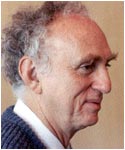 |
Martin Lewis Perl Martin Lewis Perl Martin Lewis Perl is an American physicist, who won the Nobel Prize in Physics in 1995 for his discovery of the tau lepton.His parents were Jewish emigrants to the US from the Polish area of Russia.... |
United States | "for the discovery of the tau lepton Tau lepton The tau , also called the tau lepton, tau particle or tauon, is an elementary particle similar to the electron, with negative electric charge and a spin of . Together with the electron, the muon, and the three neutrinos, it is classified as a lepton... " and "for pioneering experimental contributions to lepton Lepton A lepton is an elementary particle and a fundamental constituent of matter. The best known of all leptons is the electron which governs nearly all of chemistry as it is found in atoms and is directly tied to all chemical properties. Two main classes of leptons exist: charged leptons , and neutral... physics" |
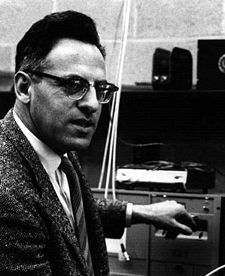 |
Frederick Reines Frederick Reines Frederick Reines was an American physicist. He was awarded the 1995 Nobel Prize in Physics for his co-detection of the neutrino with Clyde Cowan in the neutrino experiment, and may be the only scientist in history "so intimately associated with the discovery of an elementary particle and the... |
United States | "for the detection of the neutrino Neutrino A neutrino is an electrically neutral, weakly interacting elementary subatomic particle with a half-integer spin, chirality and a disputed but small non-zero mass. It is able to pass through ordinary matter almost unaffected... " and "for pioneering experimental contributions to lepton Lepton A lepton is an elementary particle and a fundamental constituent of matter. The best known of all leptons is the electron which governs nearly all of chemistry as it is found in atoms and is directly tied to all chemical properties. Two main classes of leptons exist: charged leptons , and neutral... physics" |
|
| 1996 | David Morris Lee David Lee (physicist) David Morris Lee is an American physicist who shared the 1996 Nobel Prize in Physics with Robert C. Richardson and Douglas Osheroff "for their discovery of superfluidity in helium-3"-Personal life:... |
United States | "for their discovery of superfluid Superfluid Superfluidity is a state of matter in which the matter behaves like a fluid without viscosity and with extremely high thermal conductivity. The substance, which appears to be a normal liquid, will flow without friction past any surface, which allows it to continue to circulate over obstructions and... ity in helium-3 Helium-3 Helium-3 is a light, non-radioactive isotope of helium with two protons and one neutron. It is rare on Earth, and is sought for use in nuclear fusion research... " |
|
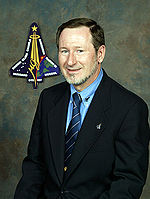 |
Douglas D. Osheroff Douglas D. Osheroff Douglas Dean Osheroff is an American physicist known for his work in experimental condensed matter physics, in particular for his co-discovery of superfluidity in Helium-3. For his contributions he shared the 1996 Nobel Prize in Physics along with David Lee and Robert C... |
United States | ||
| Robert Coleman Richardson Robert Coleman Richardson Robert Coleman Richardson is an American experimental physicist whose area of research includes sub-millikelvin temperature studies of helium-3... |
United States | |||
| 1997 |  |
Steven Chu Steven Chu Steven Chu is an American physicist and the 12th United States Secretary of Energy. Chu is known for his research at Bell Labs in cooling and trapping of atoms with laser light, which won him the Nobel Prize in Physics in 1997, along with his scientific colleagues Claude Cohen-Tannoudji and... |
United States | "for development of methods to cool and trap atoms with laser light." |
 |
Claude Cohen-Tannoudji Claude Cohen-Tannoudji Claude Cohen-Tannoudji is a French physicist and Nobel Laureate. He shared the 1997 Nobel Prize in Physics with Steven Chu and William Daniel Phillips for research in methods of laser cooling and trapping atoms... |
France | ||
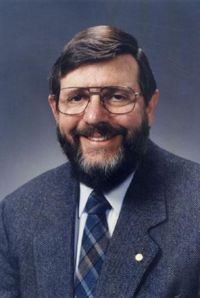 |
William Daniel Phillips William Daniel Phillips William Daniel Phillips is an American physicist and shared the Nobel Prize in Physics for 1997 with Steven Chu and Claude Cohen-Tannoudji. He is of Italian and Welsh descent.-Biography:... |
United States | ||
| 1998 |  |
Robert B. Laughlin Robert B. Laughlin Robert Betts Laughlin is a professor of Physics and Applied Physics at Stanford University. Along with Horst L. Störmer of Columbia University and Daniel C. Tsui of Princeton University, he was awarded a share of the 1998 Nobel Prize in physics for their explanation of the fractional quantum Hall... |
United States | "for their discovery of a new form of quantum fluid with fractionally charged excitations" |
| Horst Ludwig Störmer Horst Ludwig Störmer Horst Ludwig Störmer is a German physicist who shared the 1998 Nobel Prize in Physics with Daniel Tsui and Robert Laughlin. The three shared the prize "for their discovery of a new form of quantum fluid with fractionally charged excitations"... |
Germany | |||
| Daniel Chee Tsui Daniel C. Tsui Daniel Chee Tsui is a Chinese-born American physicist whose areas of research included electrical properties of thin films and microstructures of semiconductors and solid-state physics... |
United States | |||
| 1999 |  |
Gerardus 't Hooft Gerardus 't Hooft Gerardus 't Hooft is a Dutch theoretical physicist and professor at Utrecht University, the Netherlands. He shared the 1999 Nobel Prize in Physics with his thesis advisor Martinus J. G... |
Netherlands | "for elucidating the quantum structure of electroweak interaction Electroweak interaction In particle physics, the electroweak interaction is the unified description of two of the four known fundamental interactions of nature: electromagnetism and the weak interaction. Although these two forces appear very different at everyday low energies, the theory models them as two different... s in physics" |
| Martinus J. G. Veltman Martinus J. G. Veltman Martinus Justinus Godefriedus Veltman is a Dutch theoretical physicist. He shared the 1999 Nobel Prize in physics with his former student Gerardus 't Hooft for their work on particle theory.-Biography:... |
Netherlands | |||
| 2000 | 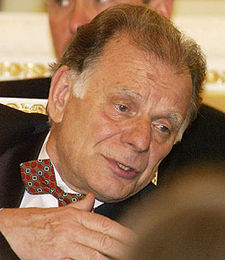 |
Zhores Ivanovich Alferov | Russia Russia Russia or , officially known as both Russia and the Russian Federation , is a country in northern Eurasia. It is a federal semi-presidential republic, comprising 83 federal subjects... |
"for developing semiconductor Semiconductor A semiconductor is a material with electrical conductivity due to electron flow intermediate in magnitude between that of a conductor and an insulator. This means a conductivity roughly in the range of 103 to 10−8 siemens per centimeter... heterostructures used in high-speed- and optoelectronics Optoelectronics Optoelectronics is the study and application of electronic devices that source, detect and control light, usually considered a sub-field of photonics. In this context, light often includes invisible forms of radiation such as gamma rays, X-rays, ultraviolet and infrared, in addition to visible light... " |
| Herbert Kroemer Herbert Kroemer Herbert Kroemer , a professor of electrical and computer engineering at the University of California, Santa Barbara, received his Ph.D. in theoretical physics in 1952 from the University of Göttingen, Germany, with a dissertation on hot electron effects in the then-new transistor, setting the stage... |
Germany | |||
| Jack St. Clair Kilby Jack Kilby Jack St. Clair Kilby was an American physicist who took part in the invention of the integrated circuit while working at Texas Instruments in 1958. He was awarded the Nobel Prize in physics in 2000. He is credited with the invention of the integrated circuit or microchip... |
United States | "for his part in the invention of the integrated circuit Integrated circuit An integrated circuit or monolithic integrated circuit is an electronic circuit manufactured by the patterned diffusion of trace elements into the surface of a thin substrate of semiconductor material... " |
||
| 2001 |  |
Eric Allin Cornell Eric Allin Cornell Eric Allin Cornell is an American physicist who, along with Carl E. Wieman, was able to synthesize the first Bose–Einstein condensate in 1995... |
United States | "for the achievement of Bose-Einstein condensation in dilute gases of alkali atoms, and for early fundamental studies of the properties of the condensates" |
| Carl Edwin Wieman Carl Wieman Carl Edwin Wieman is an American physicist at the University of British Columbia and recipient of the Nobel Prize in Physics for the production, in 1995 with Eric Allin Cornell, of the first true Bose–Einstein condensate.-Biography:... |
United States | |||
 |
Wolfgang Ketterle Wolfgang Ketterle Wolfgang Ketterle is a German physicist and professor of physics at the Massachusetts Institute of Technology . His research has focused on experiments that trap and cool atoms to temperatures close to absolute zero, and he led one of the first groups to realize Bose-Einstein condensation in these... |
Germany | ||
| 2002 | Raymond Davis, Jr. | United States | "for pioneering contributions to astrophysics, in particular for the detection of cosmic neutrino Neutrino A neutrino is an electrically neutral, weakly interacting elementary subatomic particle with a half-integer spin, chirality and a disputed but small non-zero mass. It is able to pass through ordinary matter almost unaffected... s" |
|
| Masatoshi Koshiba Masatoshi Koshiba is a Japanese physicist. He jointly won the Nobel Prize in Physics in 2002.He graduated from the University of Tokyo in 1951 and received a Ph.D. in physics at the University of Rochester, New York, in 1955... |
Japan | |||
 |
Riccardo Giacconi Riccardo Giacconi Riccardo Giacconi is an Italian/American Nobel Prize-winning astrophysicist who laid the foundations of X-ray astronomy. He is currently a professor at the Johns Hopkins University.- Biography :... |
United States | "for pioneering contributions to astrophysics, which have led to the discovery of cosmic X-ray sources" | |
| 2003 |  |
Alexei Alexeyevich Abrikosov Alexei Alexeyevich Abrikosov Alexei Alexeyevich Abrikosov is a Soviet and Russian theoretical physicist whose main contributions are in the field of condensed matter physics. He was awarded the Nobel Prize in Physics in 2003.- Biography :... |
Russia United States |
"for pioneering contributions to the theory of superconductors Superconductivity Superconductivity is a phenomenon of exactly zero electrical resistance occurring in certain materials below a characteristic temperature. It was discovered by Heike Kamerlingh Onnes on April 8, 1911 in Leiden. Like ferromagnetism and atomic spectral lines, superconductivity is a quantum... and superfluids" |
| Vitaly Lazarevich Ginzburg Vitaly Ginzburg Vitaly Lazarevich Ginzburg ForMemRS was a Soviet theoretical physicist, astrophysicist, Nobel laureate, a member of the Russian Academy of Sciences and one of the fathers of Soviet hydrogen bomb... |
Russia | |||
| Anthony James Leggett Anthony James Leggett Sir Anthony James Leggett, KBE, FRS , aka Tony Leggett, has been a Professor of Physics at the University of Illinois at Urbana-Champaign since 1983.... |
United Kingdom United States |
|||
| 2004 |  |
David J. Gross David Gross David Jonathan Gross is an American particle physicist and string theorist. Along with Frank Wilczek and David Politzer, he was awarded the 2004 Nobel Prize in Physics for their discovery of asymptotic freedom. He is currently the director and holder of the Frederick W... |
United States | "for the discovery of asymptotic freedom Asymptotic freedom In physics, asymptotic freedom is a property of some gauge theories that causes interactions between particles to become arbitrarily weak at energy scales that become arbitrarily large, or, equivalently, at length scales that become arbitrarily small .Asymptotic freedom is a feature of quantum... in the theory of the strong interaction Strong interaction In particle physics, the strong interaction is one of the four fundamental interactions of nature, the others being electromagnetism, the weak interaction and gravitation. As with the other fundamental interactions, it is a non-contact force... " |
| H. David Politzer | United States | |||
 |
Frank Wilczek Frank Wilczek Frank Anthony Wilczek is a theoretical physicist from the United States and a Nobel laureate. He is currently the Herman Feshbach Professor of Physics at the Massachusetts Institute of Technology .... |
United States | ||
| 2005 |  |
Roy J. Glauber Roy J. Glauber Roy Jay Glauber is an American theoretical physicist. He is the Mallinckrodt Professor of Physics at Harvard University and Adjunct Professor of Optical Sciences at the University of Arizona... |
United States | "for his contribution to the quantum theory of optical coherence Coherence (physics) In physics, coherence is a property of waves that enables stationary interference. More generally, coherence describes all properties of the correlation between physical quantities of a wave.... " |
| John L. Hall John L. Hall John Lewis "Jan" Hall is an American physicist, and Nobel laureate in physics. He shared one half of the 2005 Nobel Prize in Physics with Theodor W. Hänsch for his work in precision spectroscopy.-Biography:... |
United States | "for their contributions to the development of laser-based precision spectroscopy Spectroscopy Spectroscopy is the study of the interaction between matter and radiated energy. Historically, spectroscopy originated through the study of visible light dispersed according to its wavelength, e.g., by a prism. Later the concept was expanded greatly to comprise any interaction with radiative... , including the optical frequency comb technique" |
||
 |
Theodor W. Hänsch | Germany | ||
| 2006 |  |
John C. Mather John C. Mather John Cromwell Mather is an American astrophysicist, cosmologist and Nobel Prize in Physics laureate for his work on the Cosmic Background Explorer Satellite with George Smoot. COBE was the first experiment to measure "..... |
United States | "for their discovery of the blackbody form and anisotropy Anisotropy Anisotropy is the property of being directionally dependent, as opposed to isotropy, which implies identical properties in all directions. It can be defined as a difference, when measured along different axes, in a material's physical or mechanical properties An example of anisotropy is the light... of the cosmic microwave background radiation Cosmic microwave background radiation In cosmology, cosmic microwave background radiation is thermal radiation filling the observable universe almost uniformly.... " |
| George F. Smoot George Smoot George Fitzgerald Smoot III is an American astrophysicist, cosmologist, Nobel laureate, and $1 million TV quiz show prize winner . He won the Nobel Prize in Physics in 2006 for his work on COBE with John C... |
United States | |||
| 2007 | Albert Fert Albert Fert Albert Fert is a French physicist and one of the discoverers of giant magnetoresistance which brought about a breakthrough in gigabyte hard disks... |
France | "for the discovery of giant magnetoresistance" | |
 |
Peter Grünberg Peter Grünberg Peter Andreas Grünberg is a German physicist, and Nobel Prize in Physics laureate for his discovery with Albert Fert of giant magnetoresistance which brought about a breakthrough in gigabyte hard disk drives.-Biography:... |
Germany | ||
| 2008 |  |
Makoto Kobayashi Makoto Kobayashi (physicist) is a Japanese physicist known for his work on CP-violation who was awarded one quarter of the 2008 Nobel Prize in Physics "for the discovery of the origin of the broken symmetry which predicts the existence of at least three families of quarks in nature."- Biography :After completing his PhD at... |
Japan | "for the discovery of the origin of the broken symmetry which predicts the existence of at least three families of quarks in nature" |
 |
Toshihide Maskawa Toshihide Maskawa is a Japanese theoretical physicist known for his work on CP-violation who was awarded one quarter of the 2008 Nobel Prize in Physics "for the discovery of the origin of the broken symmetry which predicts the existence of at least three families of quarks in nature."-Biography:A native of Aichi... |
Japan | ||
 |
Yoichiro Nambu Yoichiro Nambu is a Japanese-born American physicist, currently a professor at the University of Chicago. Known for his contributions to the field of theoretical physics, he was awarded a one-half share of the Nobel Prize in Physics in 2008 for the discovery of the mechanism of spontaneous broken symmetry in... |
United States | "for the discovery of the mechanism of spontaneous broken symmetry Spontaneous symmetry breaking Spontaneous symmetry breaking is the process by which a system described in a theoretically symmetrical way ends up in an apparently asymmetric state.... in subatomic physics" |
|
| 2009 |  |
Charles K. Kao Charles K. Kao The Honorable Sir Charles Kuen Kao, GBM, KBE, FRS, FREng is a pioneer in the development and use of fiber optics in telecommunications... |
Hong Kong United Kingdom United States |
"for groundbreaking achievements concerning the transmission of light in fibers Optical fiber An optical fiber is a flexible, transparent fiber made of a pure glass not much wider than a human hair. It functions as a waveguide, or "light pipe", to transmit light between the two ends of the fiber. The field of applied science and engineering concerned with the design and application of... for optical communication Optical communication Optical communication is any form of telecommunication that uses light as the transmission medium.An optical communication system consists of a transmitter, which encodes a message into an optical signal, a channel, which carries the signal to its destination, and a receiver, which reproduces the... " |
| Willard S. Boyle | Canada | "for the invention of an imaging semiconductor Semiconductor A semiconductor is a material with electrical conductivity due to electron flow intermediate in magnitude between that of a conductor and an insulator. This means a conductivity roughly in the range of 103 to 10−8 siemens per centimeter... circuit – the CCD sensor Charge-coupled device A charge-coupled device is a device for the movement of electrical charge, usually from within the device to an area where the charge can be manipulated, for example conversion into a digital value. This is achieved by "shifting" the signals between stages within the device one at a time... " |
||
| George E. Smith George E. Smith George Elwood Smith is an American scientist, applied physicist, and co-inventor of the charge-coupled device. He was awarded a one-quarter share in the 2009 Nobel Prize in Physics for "the invention of an imaging semiconductor circuit—the CCD sensor".Smith was born in White Plains, New York... |
United States | |||
| 2010 | 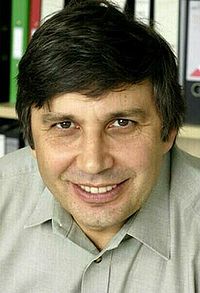 |
Andre Geim Andre Geim Andre Konstantin Geim, FRS is a Dutch-Russian-British physicist working at the University of Manchester. Geim was awarded the 2010 Nobel Prize in Physics jointly with Konstantin Novoselov for his work on graphene... |
Russia Netherlands |
"for groundbreaking experiments regarding the two-dimensional material graphene Graphene Graphene is an allotrope of carbon, whose structure is one-atom-thick planar sheets of sp2-bonded carbon atoms that are densely packed in a honeycomb crystal lattice. The term graphene was coined as a combination of graphite and the suffix -ene by Hanns-Peter Boehm, who described single-layer... " |
| Konstantin Novoselov Konstantin Novoselov Konstantin Sergeevich Novoselov FRS is a Russo-British physicist, most notably known for his works on graphene together with Andre Geim, which earned them the Nobel Prize in Physics in 2010. Novoselov is currently a member of the mesoscopic physics research group at the University of Manchester as... |
Russia United Kingdom |
|||
| 2011 | 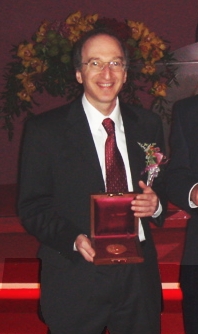 |
Saul Perlmutter Saul Perlmutter Saul Perlmutter is an American astrophysicist at the Lawrence Berkeley National Laboratory and a professor of physics at the University of California, Berkeley. He is a member of the American Academy of Arts & Sciences, and was elected a Fellow of the American Association for the Advancement of... |
United States | "for the discovery of the accelerating expansion of the Universe through observations of distant supernovae" |
| Brian P. Schmidt Brian Schmidt Brian L. Schmidt is a music composer for various video games and pinball games. He began in the video game music and sound industry in 1987 as a composer/sound designer and programmer for Williams Electronic Games in Chicago writing music and creating sound effects for pinball machines and coin... |
United States Australia |
|||
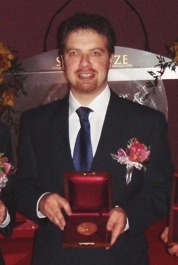 |
Adam G. Riess Adam Riess Adam Guy Riess is an American astrophysicist at Johns Hopkins University and the Space Telescope Science Institute and is widely known for his research in using supernovae as Cosmological Probes. Riess shared both the 2006 Shaw Prize in Astronomy and the 2011 Nobel Prize in Physics with Saul... |
United States | ||

